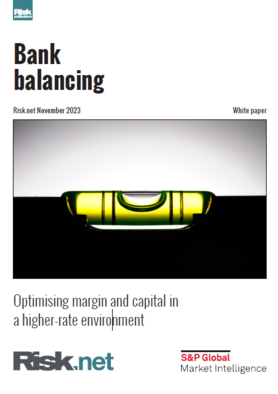Bank balancing: optimising margin and capital in a higher-rate environment

Volatility, higher interest rates and regulatory change are placing new pressures on banks’ profitability and competitiveness.
In today’s environment, banks have increased opportunities to grow income on one side of the balance sheet, but funding costs on trading and investments also rise, and with it comes greater uncertainty of the impact on portfolios, creditors and counterparties.
Strategies, systems and models designed for a low or even negative interest era may no longer be appropriate.
This Risk.net paper, featuring leading practitioner insights, assesses the challenges banks are facing in the new higher-for-longer interest rate environment, and the strategies and tools they are using to optimise margin and capital on their derivatives portfolios.
One thing remains clear. Banks will need a firm grip on their key risks, costs and exposures if they are to drive efficiencies and navigate a profitable path.
Download the whitepaper
Register for free access to hundreds of resources. Already registered? Sign in here.
More related resources
The Term €STR transition: challenges and market readiness
The progress, challenges and factors shaping the adoption of Term €STR as financial institutions transition from Euribor

Future-ready markets: turning data challenges into opportunities
This whitepaper explores data management modernisation, enabling firms to stay relevant and future-proof success.

The shift to real-time in treasury and capital markets
The transition to real-time processing is under way in treasury departments

Managed services: exploring new and fundamental concepts
The role of managed services in the financial software services industry

Leveraging liquid and long-term volatility data for effective calibration of economic scenario generators
The challenges of calibrating insurance models due to the mismatch between long-term liabilities and short-term market instruments

